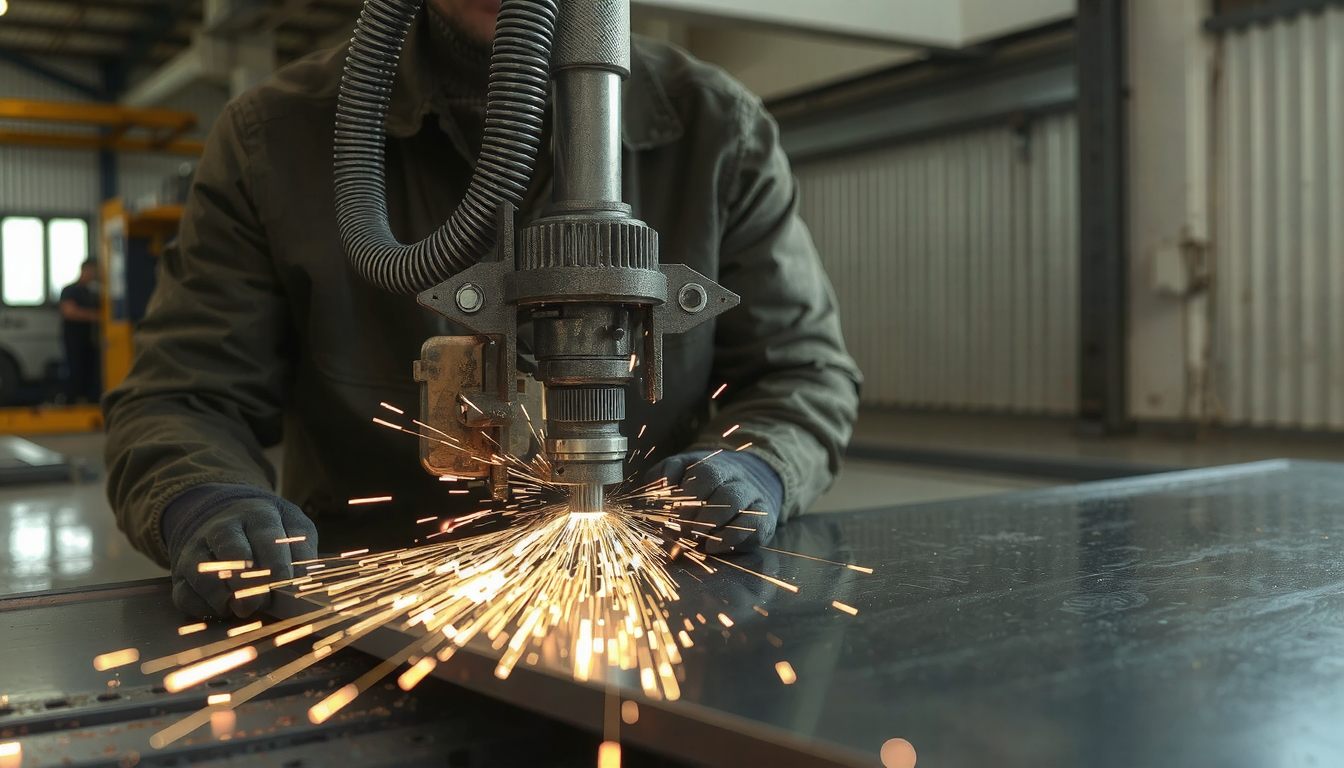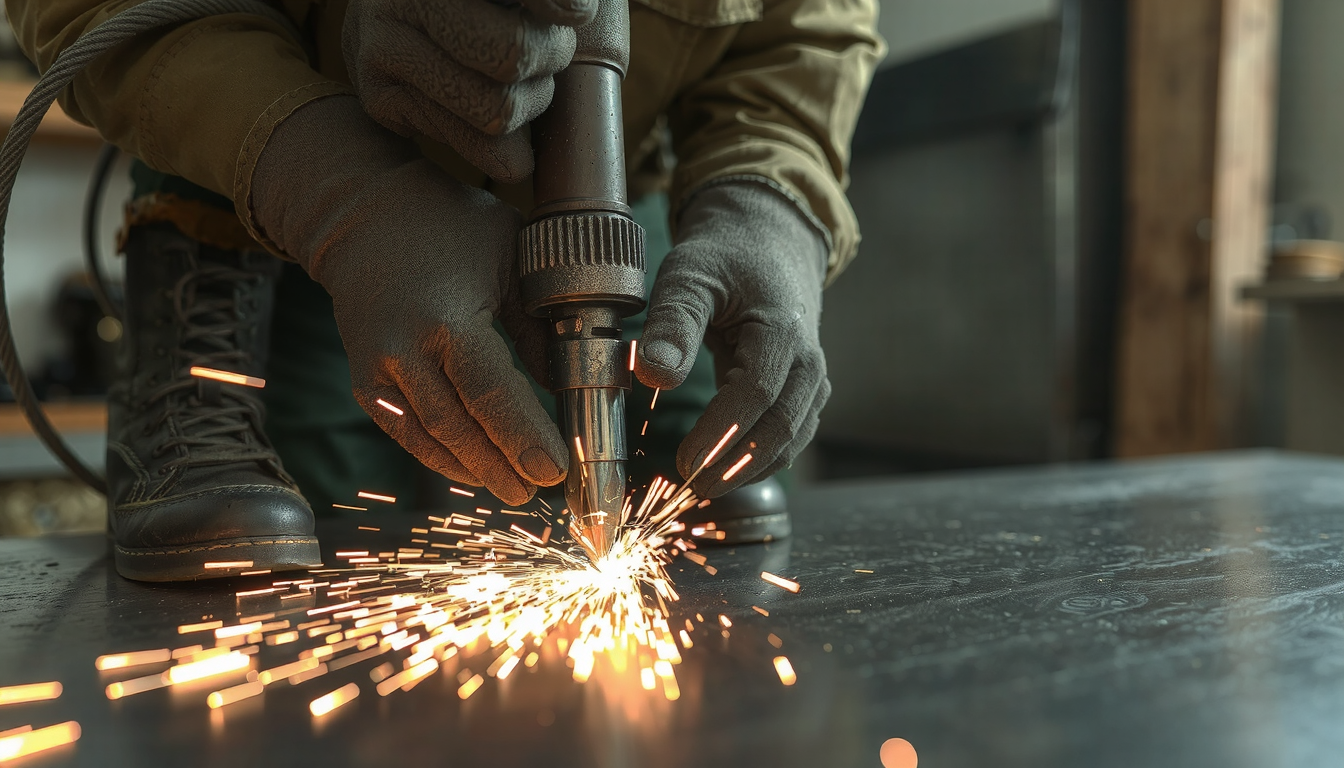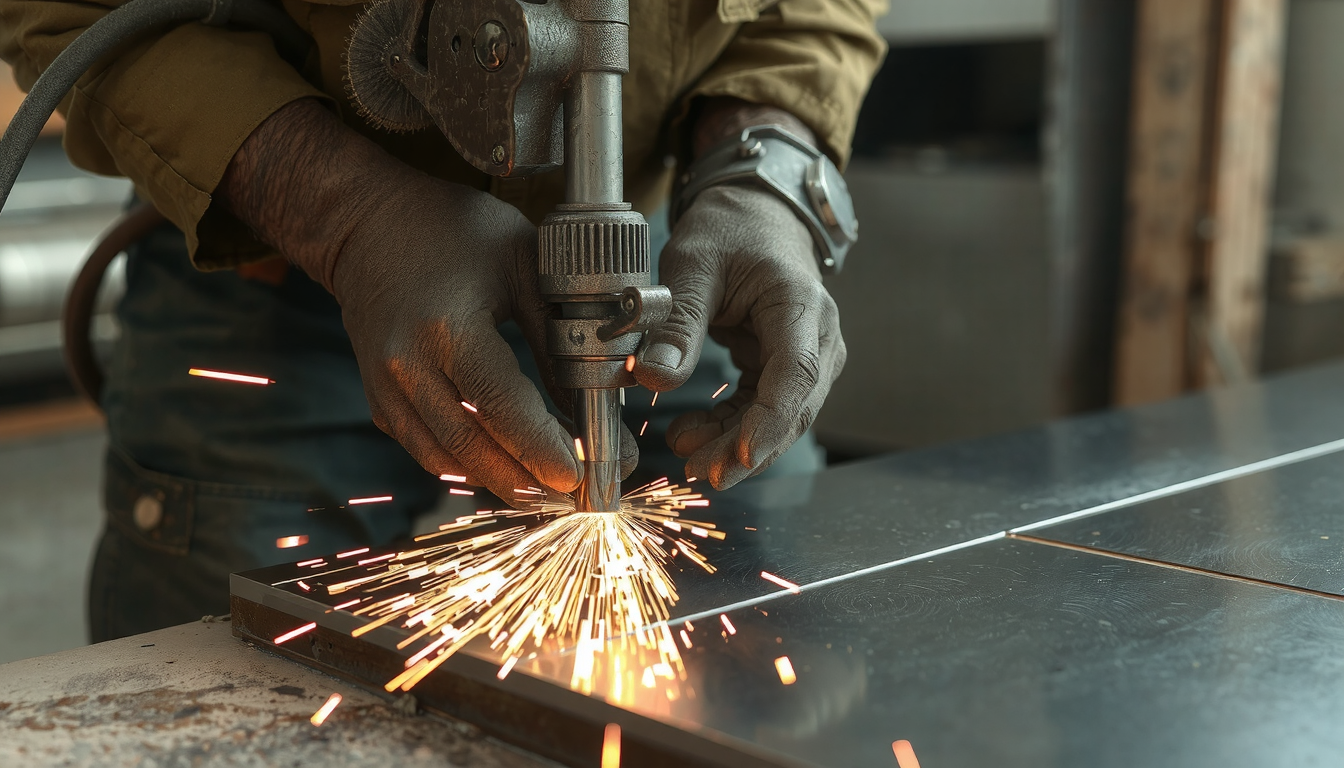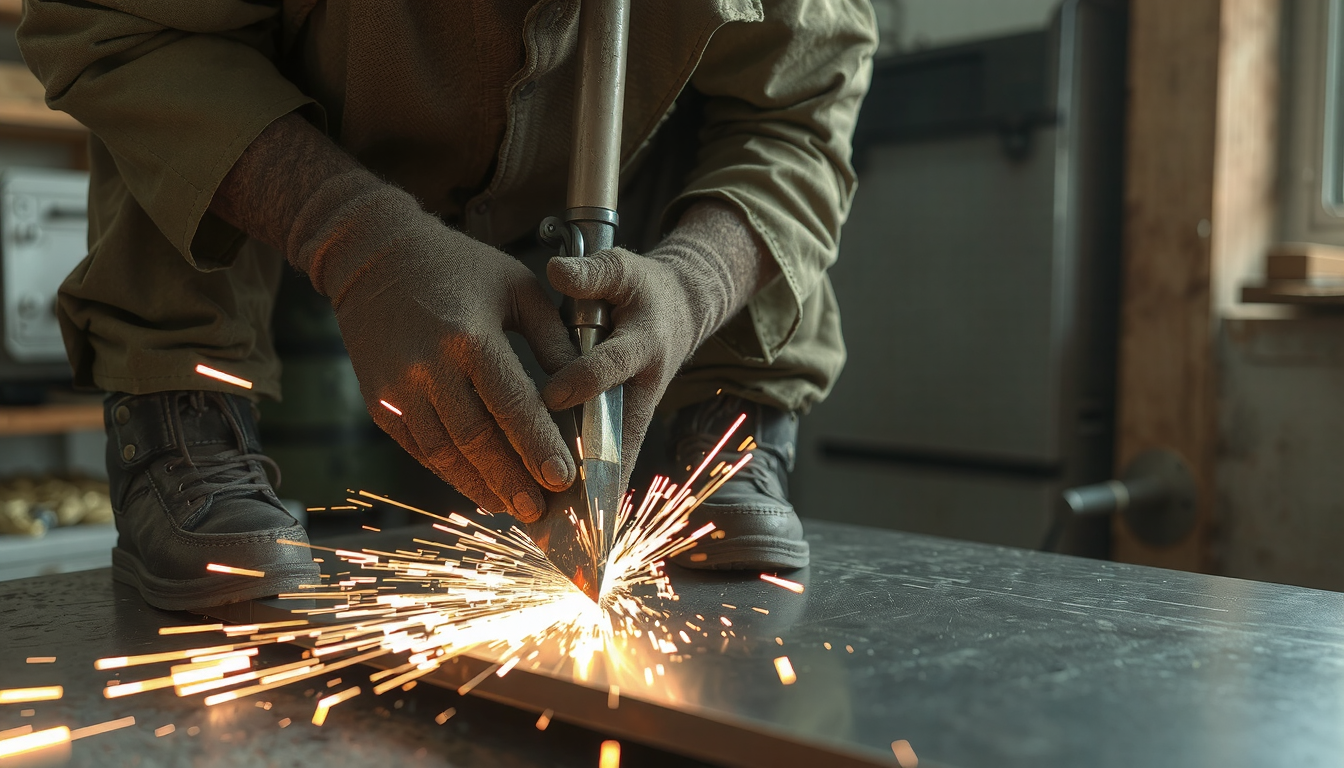Cutting metal sheet is one of the essential skills you need to have to complete many different projects. It is something that you will need for auto body work, home ductwork, or metal art. The specific method used will be sure with the materials you have. However, the right method also depends on some other key things.

A sheet metal’s way to use the best cutting method will differ according to the type and thickness of the metal. Besides, it also depends on the type of cut you want. Is it a straight cut or a curve? Moreover, your budget for the tools is essential.
In this guide, we are focusing on three main methods for the job. Our main concentration will be hand tools, power tools, and pro cutting services. At Mekalite, we deal with steel and metal on a daily basis. Therefore, we have some tips we want to share with you to do the job safely and well.
Safety First: Essential Safety Measures
Cutting metal is not a child’s play. Hence, you should start with the safety concerns first. Without safety, cutting metal can be effective, but very dangerous. These rules are fairly simple, but they will save you a lot of fear and pain.
Always ensure that you are wearing the necessary safety equipment. No options!
- Eye Protection: Use a safety glass or a face shield. The metal bits that get off sometimes are very small and very quick.
- Hand Protection: Wear heavyweight cut-resistant gloves. The edges of the metal pieces that have just been cut are very sharp.
- Hearing Protection: Wearing earplugs or earmuffs is a must when working with power tools such as angle grinders that are loud.
- Proper Clothes: In combination with wearing long-sleeve and pants, consider using materials that are hard to burn, for example, leather or pure cotton.
The safety of your workspace also needs to be considered.
- Secure the metal sheet by clamps. This action will keep it fixed, so it will not move when you cut.
- Work on a solid, clean surface.
- Place fire-prone items at a distance. This aspect is more crucial with the use of tools that make sparks.
We often witness a loose piece of sheet metal catching on a blade. This can be thrown at a force that is very dangerous. So, if you don’t want to face this problem, always clamp your work.
Choosing Your Weapon: The Right Tool
The process of how to cut metal sheet creates the starting point of your tool learning period. Therefore, this choice should be the smoothest, safest, and result in high product quality. A proper tool is the main factor for good performance at work. Keep in mind four main issues.
- Metal Thickness (Gauge): This is the most crucial issue. Thick metals require more powerful machineries.
- Type of Cut: Are you after straight lines, arcs, or figures?
- Budget: Hand tools are cheaper. Some of the power tools can be expensive.
- Edge Quality: Is a smoother edge or a rough cut your choice?

It’s not that easy to get the exact tools that you need. This Old House gives a great summary of the various metal-cutting tools that can help you with the details of your tools’ choices. We’ve even put together a chart to assist you.
| Herramienta | Best for Thickness | Cut Type | Pros | Cons |
|---|---|---|---|---|
| Tin Snips | Thin (up to 24-gauge) | Straight, Curves | Cheap, Quiet, Good control | Slow, Tiring, Can bend edges |
| Angle Grinder | Thick (all gauges) | Straight, Rough Cuts | Fast, Versatile, Cheap | Very loud, Sparks, Rough finish |
| Jigsaw | Medium (up to 10-gauge) | Complex shapes, Curves | Great for shapes, Clean cut | Slower, Blades break |
| Circular Saw | Medium (up to 1/4″) | Long, Straight Cuts | Very fast, Precise straight lines | Loud, Needs special blade |
| Shears (Power) | Thin to Medium | Straight, Curves | Fast, Clean, Less bending | More expensive, Limited use |
Manual Methods: Cutting by Hand
If you are working on smaller projects, you won’t have to buy a power tool. Learning how to cut metal sheet by hand is an excellent introduction. It gives you the best control, and it is so frugal.
Using Tin Snips (Aviation Snips)
Tin snips act like heavy-duty scissors for metal. They are a perfect fit for thin steel or aluminum sheets. Most commonly, three types are available on the market. They have color-coded handles, which show the specific direction they are designed to cut.
- Left-cutting (red handles): Best for shaping curves to the left.
- Right-cutting (green handles): Best for curves to the right.
- Straight-cutting (yellow handles): The best option for straight lines.
When using offset snips for curves, the metal curls away from your hand. Thus, it does not block your way and keeps your visual line clear. The design of the tool is very straightforward and makes your job easier.
Here’s how to use tin snips step by step:
- Draw the cut line on the sheet. Use a permanent marker as it will be clearly visible.
- To make the initial cut in the center of a sheet, drill a hole first. Ensure that it is large enough for the jaws of the snip.
- Use small, steady cuts. Don’t close the jaws all the way at the end of each cut. This helps avoid leaving a small pinch on the edge.
- For long straight cuts, instead of cutting just one long line, cut a number of shorter lines. This will give you more control.
Power Tool Techniques: Quick and Accurate
When you have to cut thick metal or have to make many cuts, the answer will always be power tools. They will save you not only time but effort as well. Learning how to cut metal sheet with power tools using the right safety techniques is an important thing for someone who is serious about DIY.

Using an Angle Grinder
An angle grinder is a powerful and versatile tool. It’s the best choice for extremely fast, rough cuts in thick sheets. It can even be used for demolition jobs where a neat edge isn’t needed.
You should use a thin metal cut-off wheel, not a thick grinding wheel. You have to hold the tool tightly. Then you have to move with a steady pulling motion along your cut line. Expect loud noise and plenty of sparks. Common in fabrication shops, this equipment is a go-to professional choice because of its versatility and power. This method yields high speed on metal sheet cutting when precision isn’t the major concern.
How to Cut with a Jigsaw
If you want to cut complicated shapes and curves, the jigsaw is your best tool. With its small blade, it can turn and follow tiny detail patterns that other saws cannot do.
To get the best results, use a blade that is specifically made for cutting metal. These blades usually have finer teeth which are counted in TPI (Teeth Per Inch). The higher the TPI, the smoother the cut. Set your jigsaw to a slower speed; it will prevent both the blade and the metal from getting overheated. A drop of cutting oil along the cut line can make the cutting smoother and help the blade last longer. As this detailed wikiHow guide shows, securing the metal properly is key to getting a clean cut with a jigsaw.
Using a Circular Saw
When it comes to long, straight cuts, a circular saw is hard to beat. It can perform excellently in jobs like cutting metal roofing panels or steel siding. It brings you both speed and accuracy.
Do not use a wood blade. Instead, a metal-cutting blade should be fitted first. These blades are made for either ferrous (iron-based) or non-ferrous (like aluminum) metals. If you want to be sure to get a perfectly straight cut, clamping a straightedge directly onto the metal sheet is the way to go. You can use either a piece of angle iron or a level. This will guide your saw. Move the saw slowly and let the blade do the work. Don’t force it.
Pro-Tips for a Flawless Finish
The fundamentals of how to cut metal sheet are one thing. Gaining results that are of an expert standard needs a few more inputs. The following tips will help you make cleaner cuts and have safer edges.
Avoiding Warping and Distortion

Metal sheets that are thin are most susceptible to heat. Power tools generate heat. This could cause the metal to warp or bend, which might destroy your project.
One of the best methods to prevent this is called the “sandwich” method. Clamp your sheet metal between two pieces of scrap plywood or MDF. Make sure the clamps are tight along your cut line. The wood supports the metal and absorbs some heat. This keeps your sheet flat. This very simple trick can turn things around, particularly with a jigsaw or angle grinder.
Deburring for a Clean, Safe Edge
After cutting, the metal edge will have tiny, sharp bits called burrs. They are very sharp and can easily cut you. Deburring removes these burrs and will give you a smooth, safe edge.
You need only a few simple tools for this. A standard metal file works fine. You can also use a handheld deburring tool or a flap disc on an angle grinder. To deburr the edge, run your tool along the cut at a 45-degree angle. Use light, even pressure until the edge feels smooth.
Achieving Perfect Lines and Curves
For perfectly straight lines, always use a guide. Clamp a straightedge to your workpiece to guide your circular saw or jigsaw. A level or straight piece of steel works perfectly.
For perfect curves, first, draw your line with a compass or template. When cutting a tight curve with a jigsaw, make a few “relief” cuts in the waste part of the metal. These small cuts go from the edge to your cut line. They let the waste material fall away as you cut, giving the blade room to turn. As experts point out, avoiding common pitfalls like improper material securing is crucial for both safety and cut quality.
When Your Project Demands More
At times, your best efforts as a DIYer are not going to be enough. For projects that call for extreme precision, difficult shapes, or multiple identical parts, professional cutting services are the only way to go.
Industrial shops use state-of-the-art methods that most hobbyists do not have. These include:
- Laser Cutting: Very accurate and detailed designs are made using a high-power laser.
- Waterjet Cutting: Cuts with a high-pressure stream of water and abrasive material. It is especially useful for materials that are prone to warping because it doesn’t create heat.
- CNC Punching/Shearing: Computer-operated machines that punch or shear parts at high speed for repeatable accuracy.
For projects needing this level of precision, professional fabricación de chapa metálica services are the only viable solution. We can deliver perfectly cut parts to your exact specs. This is often part of a larger manufacturing process, which might also include services like Servicios de torneado CNC for creating complete, multi-part assemblies.
FAQ: Your Questions Answered
Here are some of the answers to commonly asked questions about how to cut metal sheet.
Q1: What is the easiest way to cut thin sheet metal at home?
A: For thin metals (like 22-gauge or thinner), a good pair of aviation snips is the easiest method. They are cheap, quiet, and give you excellent control for both straight lines and curves. They are the most accessible tool for a beginner.
Q2: Can you cut sheet metal with a Dremel?
A: Yes, you can use a Dremel or other rotary tool, but you need a reinforced cut-off wheel. This method is handy for very small, short, or detailed cuts in thin material. Note that the wheels wear down fast, so it is not good for long cuts.
Q3: How do you cut a hole in the middle of a sheet metal?
A: The best way to do that is to start by drilling a pilot hole first. The pilot hole should be placed within the area you plan to cut out. Make it large enough to fit your tool’s blade, like a jigsaw blade or tin snip jaws. You can then start your cut from this hole and follow your line.
Q4: How do I prevent sheet metal from rusting after cutting?
A: Cutting steel exposes a raw edge that’s not protected from moisture. To prevent rust, you must treat this edge. First, deburr the edge to make it smooth. Then, clean it with a solvent to remove any oils. Finally, apply primer, paint, or a clear sealant to protect it.
Q5: What’s the difference between metal gauge and thickness?
A: Gauge is a standard way to measure sheet metal thickness. The most important thing to remember is that the relationship is inverse; a higher gauge number means a thinner sheet of metal. For example, 24-gauge steel is thinner and easier to cut than 16-gauge steel.

